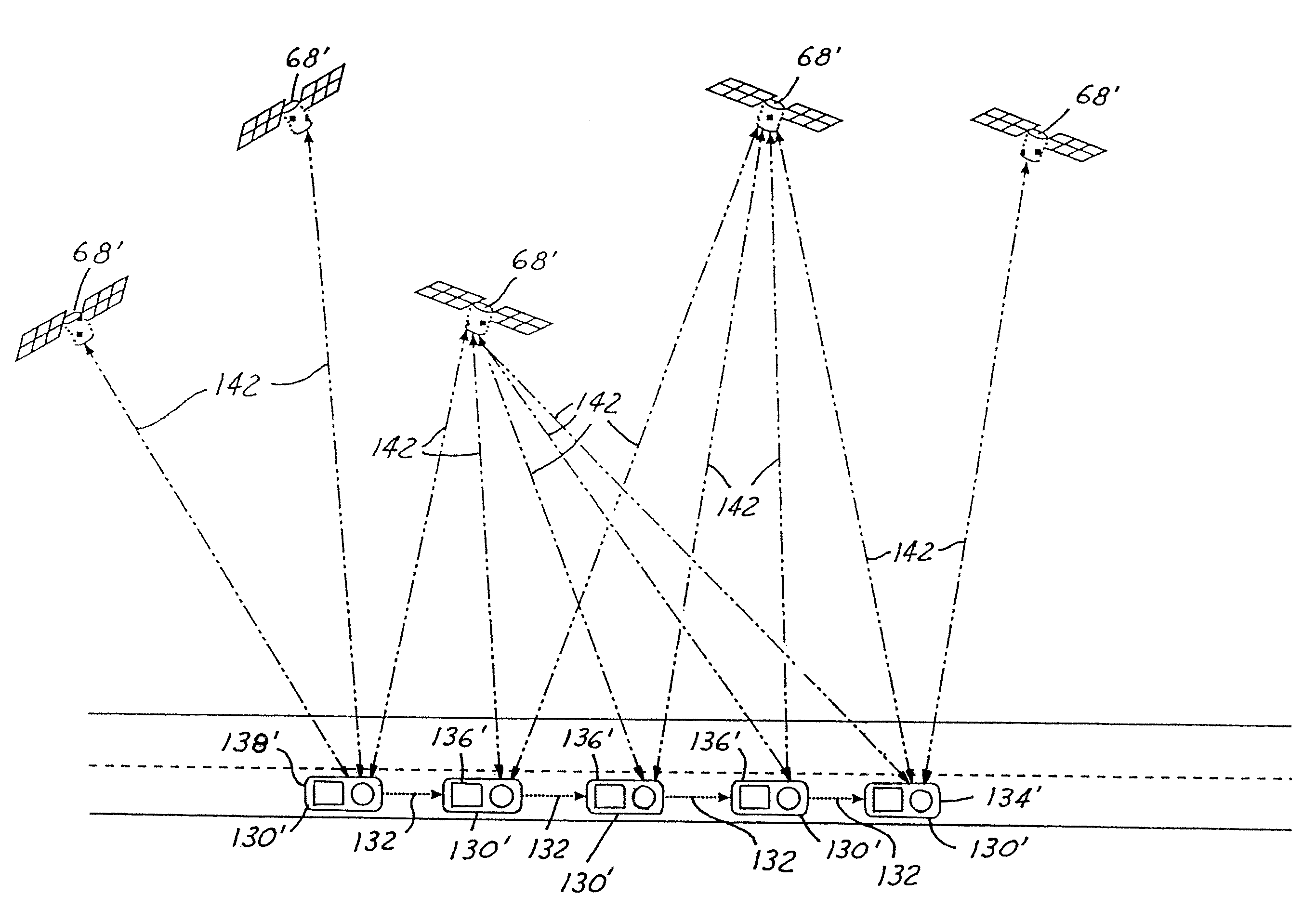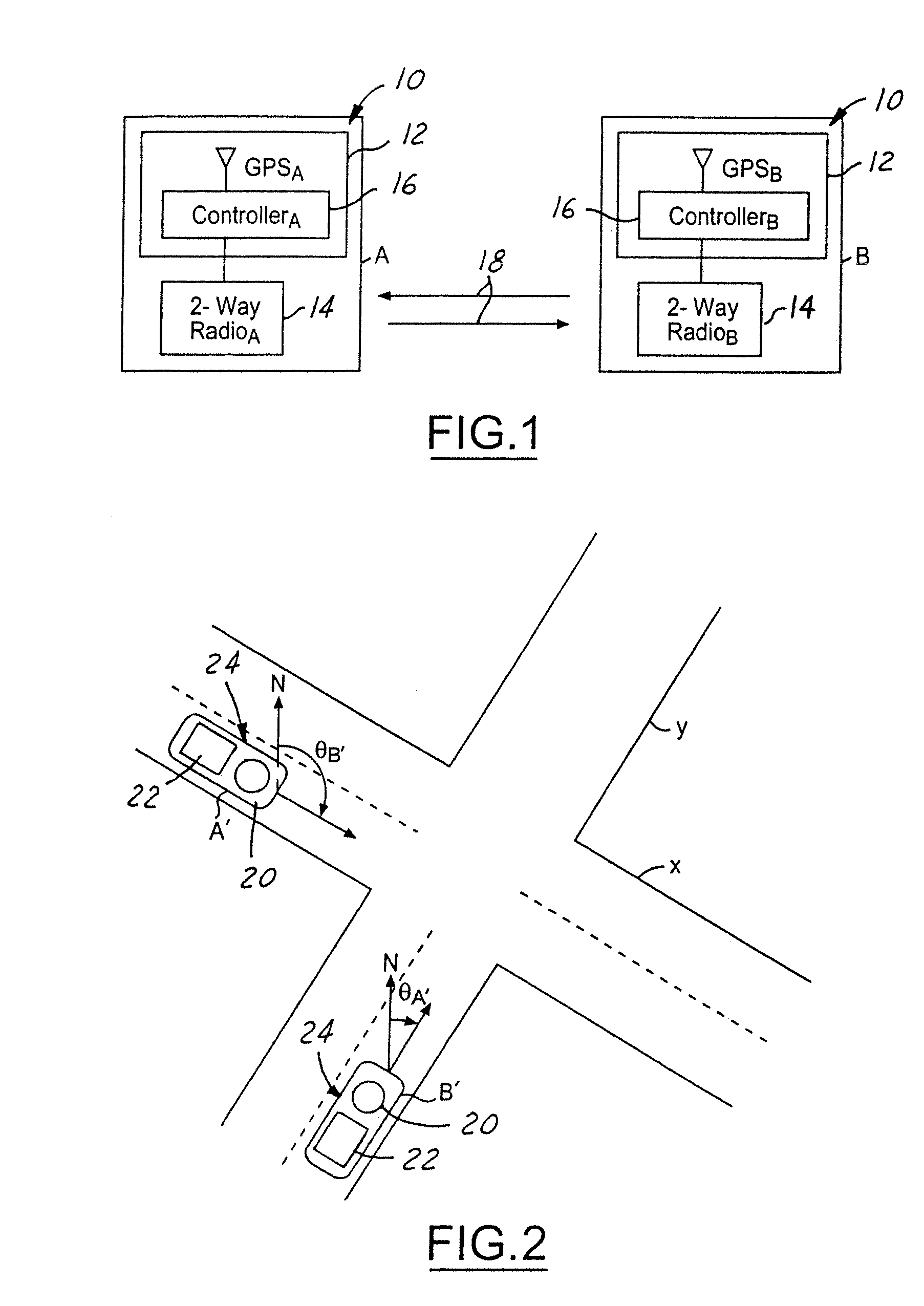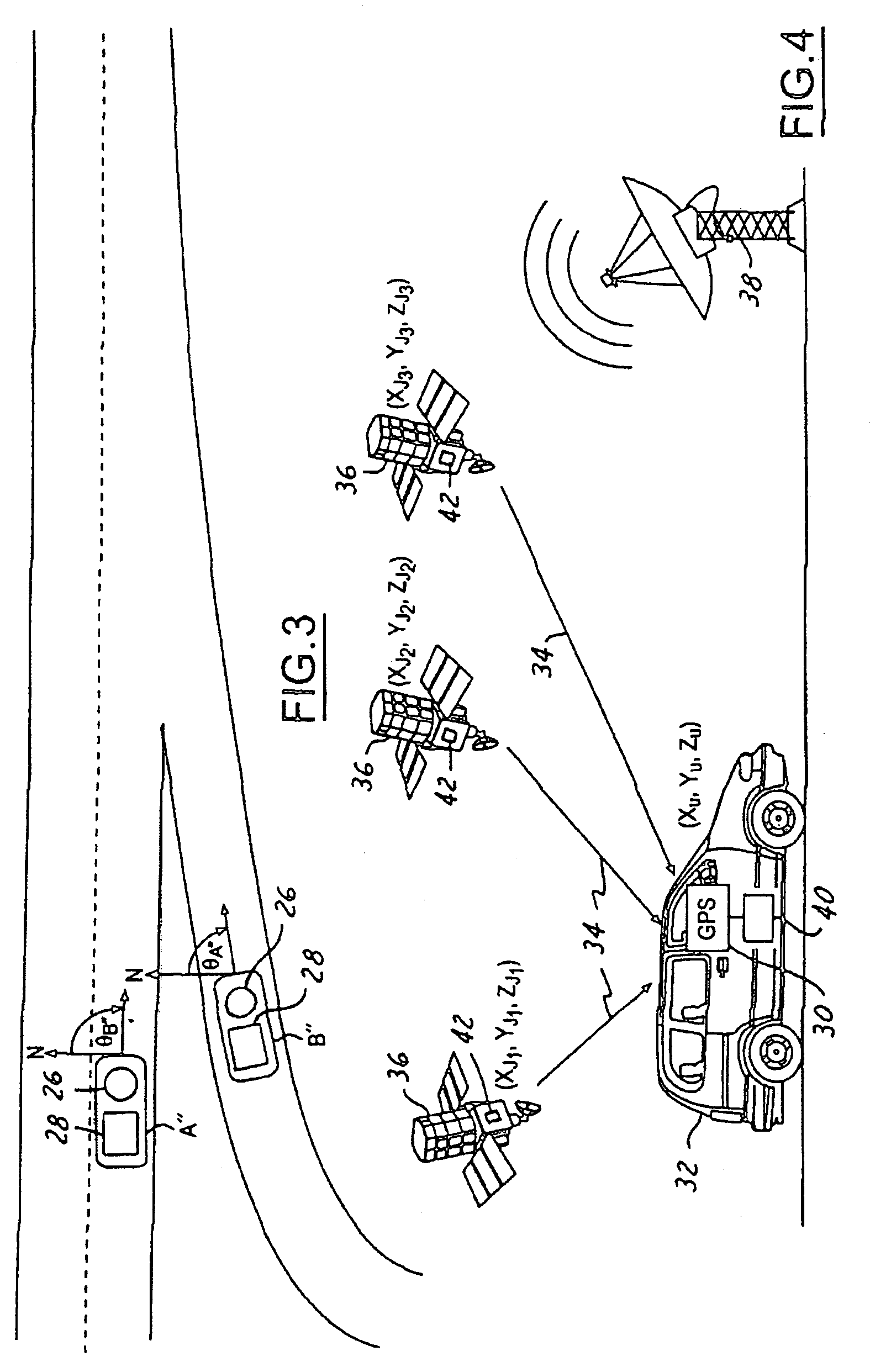Collision avoidance system having GPS enhanced with OFDM transceivers
a technology of collision avoidance and transceiver, which is applied in the direction of navigation instruments, using reradiation, instruments, etc., can solve the problems of inability to eliminate, multiply or amplify the errors attributed to the gps receiver, and the size of the errors, so as to reduce the number of satellites, increase the accuracy of measurements performed, and facilitate installation or retrofitting
- Summary
- Abstract
- Description
- Claims
- Application Information
AI Technical Summary
Benefits of technology
Problems solved by technology
Method used
Image
Examples
Embodiment Construction
[0024]GPS errors are normally categorized as either system errors or user errors. System errors are errors that arise from a GPS system itself. The system errors, for example, can include synchronization errors between satellites, synchronization errors with a central clock, inaccuracies in satellite PVT data, number of visible satellites at any given time, velocity and timing aspects within the satellites, and accuracy of the timing signal shape. Also, the relative position of the satellites affects geometric dilution of precision (GDOP), which amplifies range errors. Range errors refer to the distance between the satellites and the GPS receivers. Small angle between the range lines causes high GDOP. High GDOP refers to magnification in measurement errors in the length of the range lines due to the satellites being located near the horizon.
[0025]User errors are errors that can be minimized within the GPS receivers. User errors include receiver errors and environmental errors. Recei...
PUM
 Login to View More
Login to View More Abstract
Description
Claims
Application Information
 Login to View More
Login to View More - R&D
- Intellectual Property
- Life Sciences
- Materials
- Tech Scout
- Unparalleled Data Quality
- Higher Quality Content
- 60% Fewer Hallucinations
Browse by: Latest US Patents, China's latest patents, Technical Efficacy Thesaurus, Application Domain, Technology Topic, Popular Technical Reports.
© 2025 PatSnap. All rights reserved.Legal|Privacy policy|Modern Slavery Act Transparency Statement|Sitemap|About US| Contact US: help@patsnap.com



